
On February 13, 2008 the former Prime Minister Kevin Rudd made a formal apology to Aboriginal and Torres Strait Islander peoples, particularly to the Stolen Generations. The following resources are useful for embedding an Aboriginal perspective with children about this apology.

Sorry Day by Coral Vass and illustrated by Dub Leffler is an important story that all children should hear. It is the story about the Australian government saying sorry to the Indigenous children who were taken away from their families, way of life and culture; stripping them of their identity. There are two stories explored in this book, one based on past events and one occurs in the present, these are told on alternate double page spreads. There is the story of the day the former Prime Minister Kevin Rudd, said “sorry” on behalf of the Australian government. Intertwined with that story is a story from the past when young Indigenous children were taken from their families. The text, together with the life like illustrations is so powerful. Leffler uses different colour palettes to make the story come alive and separates the different times – sepia tones for the time period when the Indigenous children were taken from their families and full colour is used for the story revolving around the speech. The vivid images offer a heartbreaking hint of the intense fear, trauma and sheer horror the Indigenous children, their families and community experienced. At the back of this book is further information about National Sorry Day has been included
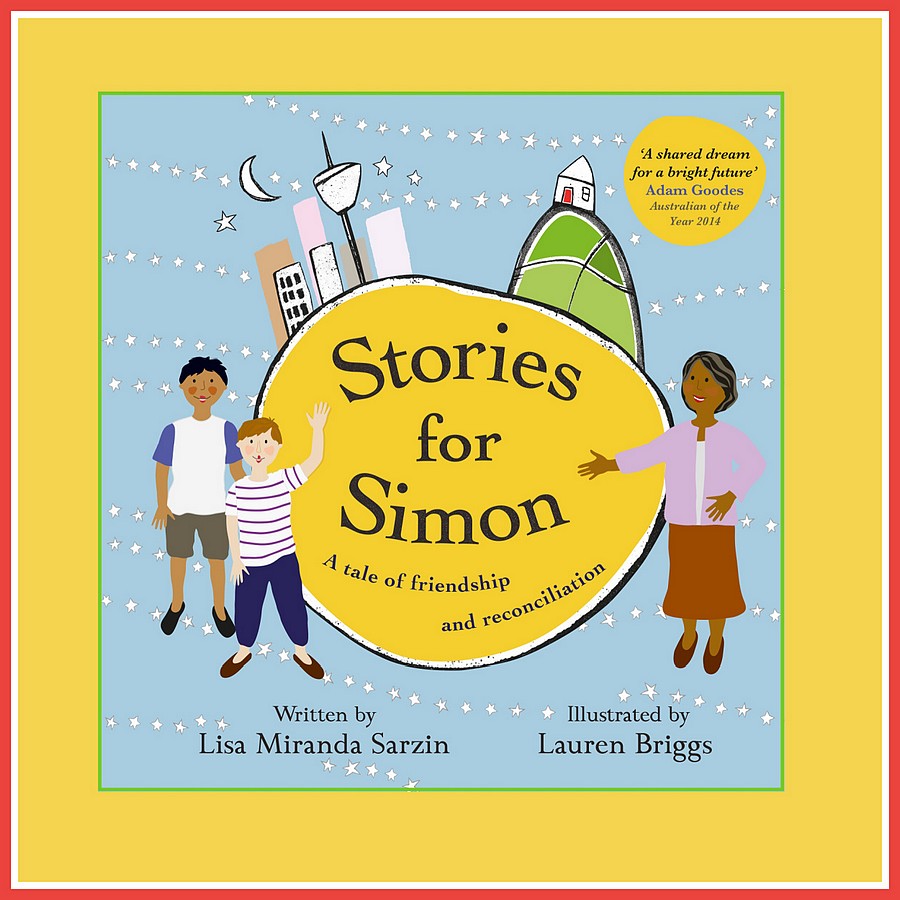
Stories for Simon – A tale of friendship and reconciliation by Lisa Miranda Sarzin and illustrated by Lauren Briggs is a powerful and moving story that explores the importance of learning about Australia’s true history, acknowledging the truths and beginning a shared journey of reconciliation. It is a story about Australia’s Stolen Generations and a story to share knowledge. Lisa and Lauren were inspired to write this story after hearing the National Apology by former Prime Minister Kevin Rudd to the Indigenous peoples on behalf of the Australian government. They noticed at the time of this speech that children had questions about the Stolen Generations. This book is a way to start conversations and help children understand that we all have a role to play in being educated about the past to develop understanding and compassion to begin a journey towards a hopeful future.
In this book we meet Simon, who resides in Sydney and is an avid collector of precious treasure he finds at the beach or on a walk. His caring Uncle surprises him with a gift for his collection – a boomerang wrapped in a sheet of newspaper. Simon brings the boomerang to school and the newspaper it is wrapped in captures the teacher’s attention. The newspaper contains excerpts from Kevin Rudd’s speech and some of these are included in a few of the illustrations. The teacher explains the newspaper article and this then has the class pondering the word “sorry”. The students quickly became curious and begin asking more questions about being sorry and “what are we sorry for?”. The teacher sensitively begins talking about the Stolen Generations. Simon goes home and asks his Mum more about this and Simon further contemplates the word sorry. His Mum shares that it is important to be sorry and to acknowledge the past, remember injustices and be a part of ensuring they are not repeated. This helps gives a sense of perspective to Simon and helps him understand even though he did not directly cause the hurt in the past, we all have a role to play in our own journeys of shared reconciliation by acknowledging and learning about the past.
That night Simon dreams about the word sorry and his dream contains a “sorry stone storm” where there is a downpour of stones, with each stone featuring the word sorry written on it. The symbolism of the stones gives some insight into Simon’s feelings about the Stolen Generations. When Simon wakes up, his room contains the stones he dreamt about. Simon with his stones in tow, then meets Vic at the beach. Vic suggests that these stones might have a purpose and invites Simon to see his Aunty Betty who he believes will know what to do with the stones. Aunty Betty suggests that she will exchange a story for a stone. Aunty Betty shares creation stories and used the final stone to tell her story when she was a little girl and taken from her family. She explains to Simon what the word “sorry” means. Simon and Vic leave Aunty Betty’s house as new friends each with a promise to share different aspects of their culture. That night Simon has another dream which proves to be a beautiful and hopeful ending to this story.
The whimsical illustrations add another layer to the story and allow the reader to connect with the text through the lens of a young innocent boy. Lauren Briggs has combined her illustrations she drew with the laborious process of etching to bring emotion to the illustrations.
This story contains a foreword by Vic Simms, an elder of the Bidjigal nation who collaborated with the creators of this book to consult about the Aboriginal content and Adam Goodes, Australian of the Year in 2014. Lisa and Lauren are donating their royalties for this book to the Goodes O’Loughlin Foundation (GO).

Kunyi by Kunyi June Anne McInerney tells her story in this picture book about being forcibly removed from her family and home when she was four years old to live with the missionaries at the Oodnadatta Children’s Home in the 1950s. This is a story of dispossession, loss, fear, courage, resilience and friendship. Kunyi tells this story through a written account, detailing her experiences of what it was like living at the Children’s Home and includes her vibrant art to illustrate these memories. Over sixty of Kunyi’s paintings are included in this book that were part of the ‘My Paintings Speak for Me’ exhibition.
Kunyi begins her story with her family – her mother, granny and siblings. Together, they peacefully and happily lived in a humpy where they spoke the Yankunytjatjara language.
Kunyi explains that when she went to the Oodnadatta Children’s Home her name was changed to ‘Anne’ and she was told to speak English. The home was rudimentary and lacking any creature comforts. There was no insulation, given it was in the desert, it was unbearably hot in the summer and freezing cold in winter. There was no dining room, the children ate out on the verandah under a corrugated iron roof. The children slept on beds covered in sets of rags, no sheets, just rags. Clean bath water was unheard of as all children bathed in the same, unchanged bathwater. They knew no different. There was no toilet paper, pieces of newspaper were used.
Kunyi shares her recollection of the children working in silence as their job was to peel the vegetables. She talks about the older children taunting the younger children by telling them about Mamu (bad spirits) while they ate their dinner on the dark verandah. Kunyi mentions the compulsory Bible lessons where harsh punishments were given if it was deemed you were not paying attention. As there were no toys or games for the children to play with, they employed their creativity and resourcefulness to make their own. Treasure came in the form of broken crockery, especially the ones featuring beautiful designs and these were hidden away from the Sisters. There were some treasured times too when the children would look for animal bones and suck the bone marrow, or go swimming at Hookey’s Hole. Kunyi’s artworks deftly capture the freedom and joy the children experienced when they were away from the home and swimming, walking along the gibber stones or admiring the wildflowers and eating bush tucker. Their admiration for the land and profound connection to it is palpable in the artwork. Kunyi talks about the harsh and cruel punishments and how the children were highly controlled and frequently punished. The final parts of her story tell how Kunyi came to leave the children’s home at age nine, after five years of being there, it was cruel, deceitful and done without care or compassion. Kunyi was sent away to a foster family who changed her name to June. Kunyi then shares a little about her mother’s heartbreaking story. There are personal photos from Kunyi’s private collection of her and her siblings at the home and later in life that have been included at the back of the book.
The end papers are truly a sight to behold, they feature a montage containing a piece from each of the paintings in the book. Each artwork represents a memory or experience, one part of Kunyi’s story. The endpapers resemble a classic squares quilt with each square a piece of Kunyi’s heart and story.
Kunyi’s story about the way the children in the home were torn away from their families, stripped of their identities, forced to reject their culture and adopt a white culture, often enduring harsh punishments in a highly controlled environment, have been shared so people can learn what happened and so the children’s experiences while at the Oodnadatta Children’s Home will not be forgotten. Kunyi has opened her heart to tell her story and that of the children in the home to educate and inform others about the long-lasting intergenerational impact of the Stolen Generations.
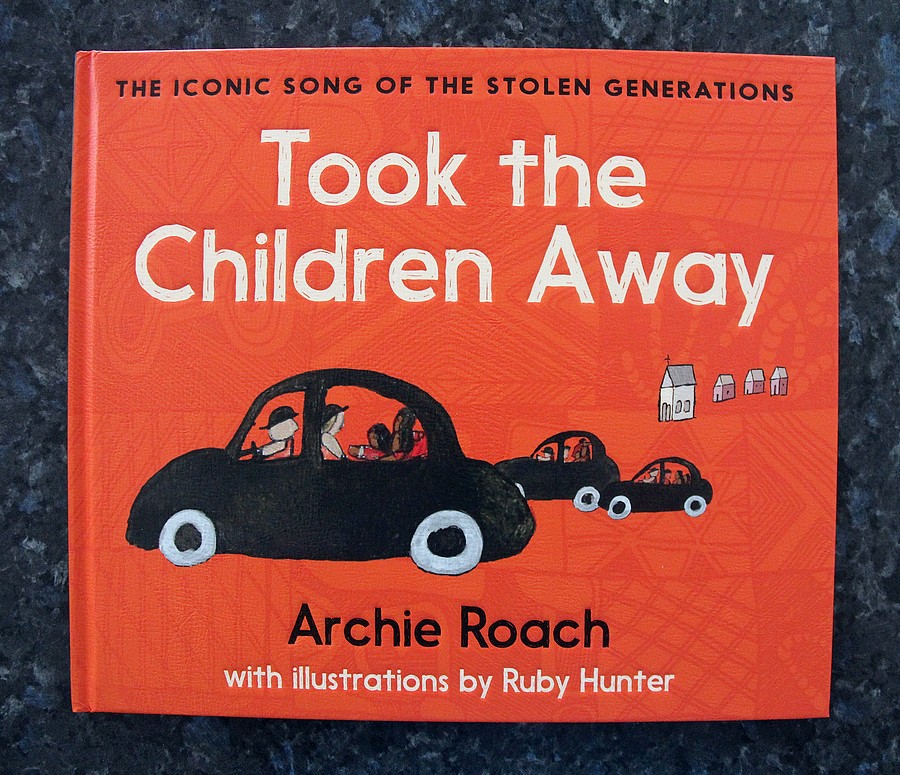
Took the Children Away by Archie Roach and illustrated by Ruby Hunter is the iconic and deeply personal song written by Archie Roach for his debut album, Charcoal Lane. This picture book has been published to honour the 30th anniversary of the song, the first ever song to receive an Australian Human Rights award. This powerful song is the story of Archie Roach and other First Nations Peoples who are part of the Stolen Generations. Archie Roach was taken from his Mum and Dad when he was two years old. He has little memory from when he was two, but his Uncle Banjo could vividly recall this time and encouraged Archie Roach to tell his story about being taken from his home in the form of a song. The evocative illustrations in the book are by Ruby Hunter, the beloved life partner of Archie Roach for thirty- eight years, also part of the Stolen Generations. Ruby passed away in 2010. Together, they produced this picture book which gives people a deeper understanding of Australia’s true and whole history. This story explores themes of loss, grief, separation, disconnection as well as reconnection, togetherness and returning home. The book also contains rare historical and personal photographs of Archie and Ruby. Archie Roach partnered with Culture is Life to create the Archie Roach Stolen Generation Resources on ABC Education. This is an invaluable resource for teachers and children.
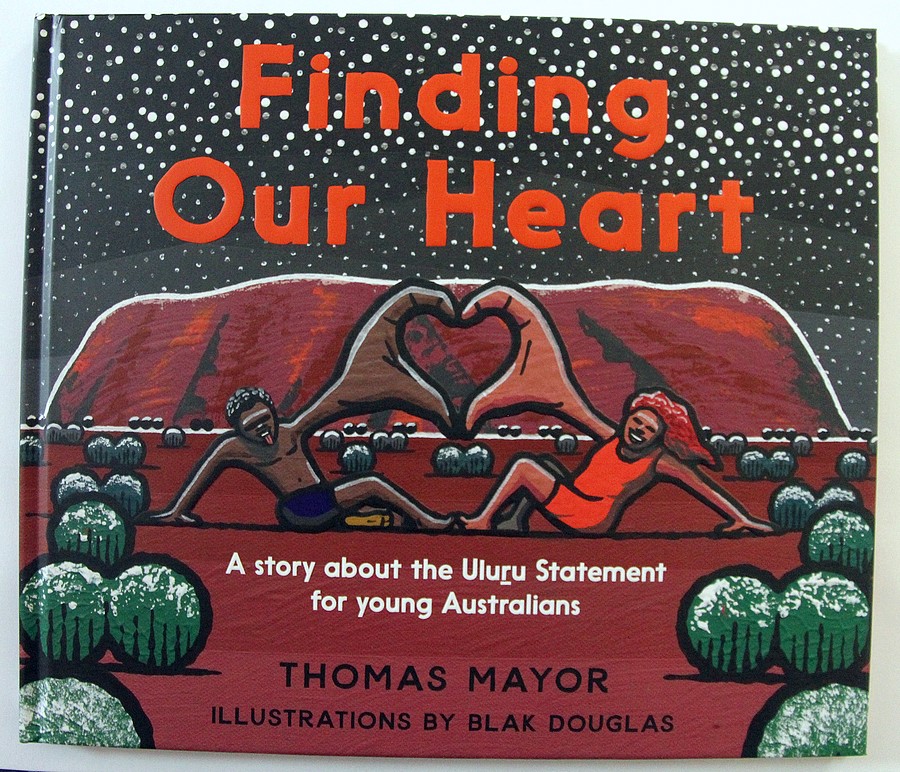
‘Finding Our Heart: A Story about the Uluru Statement for Young Australians’ by Thomas Mayer and illustrated by Blak Douglas is a must have book. This book is a call to action as it invites readers to listen and hear the First Nations voices of Australia, the voices that are over 65000 years old. These voices include the languages and the stories that have been passed down from one generation to the next that are filled with culture, knowledge and wisdom. This story invites children to learn the facts about Australia’s history and continue to appreciate Indigenous knowledge and expertise of the land and environment. This book contains the AIATSIS map of Indigenous Australia and the Uluru Statement from the Heart. There are also resources and suggestions at the back of the book for children to support the Uluru Statement. This story highlights that the heart of the nation can be found through the acknowledgement and respect of Aboriginal and Torres Strait Islander culture. As the back cover says, this is “a book about understanding Australia’s past, so we can have a shared future”.
Additional Resources:
The Story of the Healing foundation
Source: https://www.youtube.com/watch?v=zDN7R6qRpUg
This informative video explores Australia’s First Nations peoples way of life and culture over 60 000 years ago. It explains the term ‘colonisation’ and the effect this had and continues to have on Australia’s First Nations peoples. Past history and present-day impact knows as intergenerational trauma.
Guest Speakers: Aunty Rhonda Collard-Spratt and Jacki Ferro
Aunty Rhonda Collard- Spratt, a Yamatji-Noongar woman, author, artist, poet, dancer and fourth generation survivor of the Stolen Generations shares her experiences about being taken from her family when she was taken from her family at three years of age and placed in the Carnarvon Native Mission Western Australia. Aunty Rhonda talks to school children (in person or via zoom) and can be booked to speak via the Spirit of the Dreaming website.
Aunty Rhonda together with Jacki Ferro has written two books (and they are currently writing their second book in their Spirit of the Dreaming series). The first book in the Spirit of the Dreaming series is Grandfather Emu and How the Kangaroo got her Pouch which I wrote about on the blog here
Aunty Rhonda and Jacki Ferro also wrote Alice’s Daughter: Lost Mission Child.
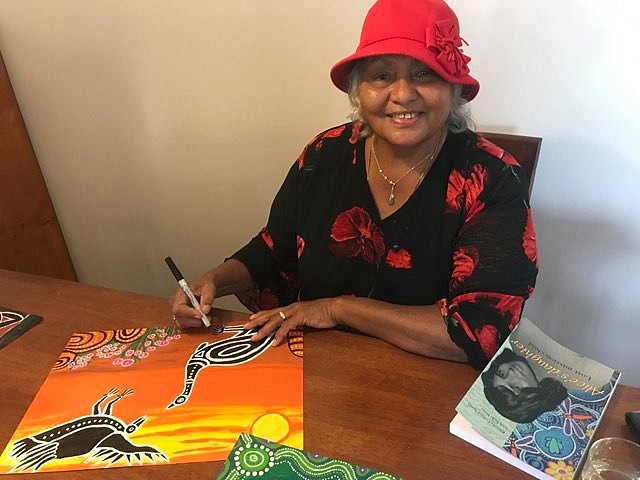
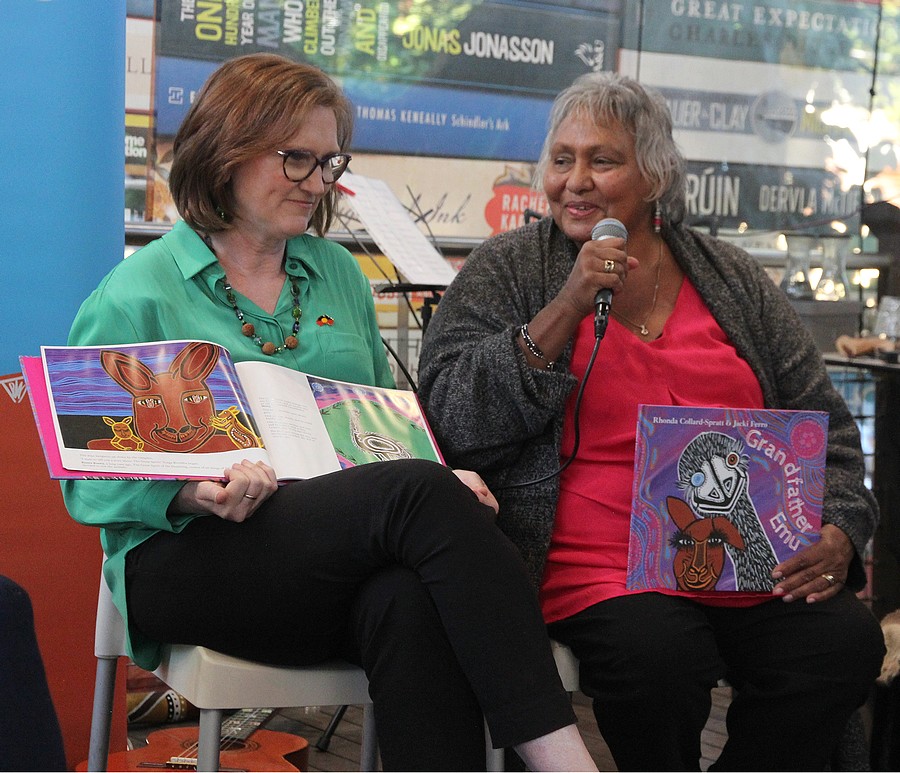
More Stories from Stolen Generation Survivors and Videos:
Telling Our Stories – Our Stolen Generations (Faye Clayton): Source: https://www.youtube.com/watch?v=kDs0oTYZqeE
The School That Tried To End Racism: Learning from the Stolen Generations https://www.abc.net.au/education/collections/the-school-that-tried-to-end-racism/learning-from-the-stolen-generations/13528660
This is an extremely moving and powerful video where Uncle Richard and Uncle Michael talk about being taken from their families. Uncle Michael says, “We don’t want you to be sad. You are our leaders of the future. It’s very important that you know the truth about what was happening, so that you can build a better life for yourselves and make a better place on this land that they now call Australia.” He explains to the children that the act ofthem listening to him helps him heal.
Apology by Former Prime Minister Kevin Rudd – video and transcript https://www.indigenous.gov.au/reconciliation/apology-australias-indigenous-peoples
Tiga Bayles – response to the 2008 apology https://www.youtube.com/watch?v=EpJGyEx33As
10th Anniversary since the Apology to the Stolen Generations – Behind the News February 13, 2018 https://www.youtube.com/watch?v=CE7hCCO9jv8
